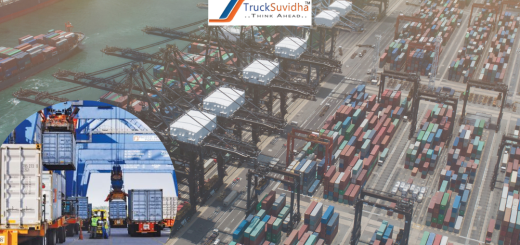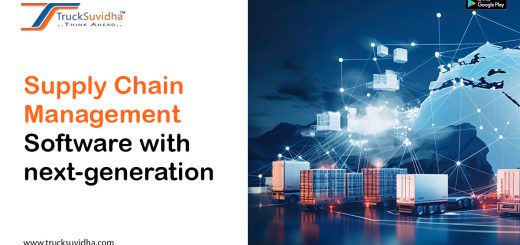Electric Vehicles and Batteries on the Evolution of Supply Chains
The transportation sector is witnessing a significant shift in the form of a supply chain revolution driven by electric vehicles (EVs) and their underlying battery operations. As governments, industries, and consumers acknowledge the pressing necessity of moving away from fossil fuel dependency and battling climate change, the demand for EVs continues to surge. At the center of this transformation lies the sophisticated manufacturing and logistics ecosystem supporting batteries, the beating heart of EV operations. In this article, we delve deeper into the fascinating realm of electric mobility and explore the supply chains fueling its expansion.
Understanding the Complex World of Electric Vehicles Battery Supply Chains
Production of an EV involves acquiring raw materials, semi-finished goods and completed components from various locations worldwide. Essential supplies comprise rare earth minerals, commonly used commodities like copper, aluminum, and nickel, and indispensable elements like graphite and lithium. These materials then get processed into battery cells, modules, and packs, laying the foundation for the electrical powertrain. Mechanical components, electronics, and digital controls subsequently get assembled, culminating in the final stages at facilities managed by renowned auto manufacturers and emerging startups.
Addressing Raw Material Issues and Environmental Implications
Extracting raw materials poses environmental and geopolitical complications. Increased emphasis on sustainable mining practices, responsible sourcing, and transparent supply chains becomes imperative. Blockchain technology, recycling, and closed-loop systems emerge as promising solutions aimed at easing concerns about labor conditions, land rights, and ecological conservation.
Transforming Logistics and Distribution Networks
Transporting large quantities of bulk, potentially dangerous cargo warrants cautious preparation and execution. Traditional shipping routes, ports, warehousing, and transportation networks are strained under mounting volume and fluctuating modal demands. Green corridors, dedicated charging stations, and autonomous truck fleets represent emerging solutions. These solutions are poised to accelerate movement, decrease emissions, and bolster operational efficiencies. Multimodal connections, regional hubs, and urban consolidation centers reconfigure the last-mile predicament, accounting for swelling EV uptake.
Implications for Downstream Entities and Value Generation
Downstream stakeholders and aftermarket service providers face consequential impacts stemming from electrification. Specifically, repair shops, dealerships, fleet operators, insurers, and salvage yards confront modified cash flow streams, skillset requirements, and machinery specs. Furthermore, training, accreditation, and adaptation constitute vital prerequisites for enterprises pursuing longevity amidst the sweeping change. Moreover, upstream constituents must foster closer ties with downstream actors, yielding reciprocally advantageous synergies and boosting customer satisfaction.
Supportive Public Policies and Economic Benefits
Public policy and fiscal inducements drive the adoption of EVs and accompanying supply chains. Monetary incentives, government subsidies, tax breaks, rebates, grants, and favorable loan arrangements draw interested buyers, encouraging wide-scale propagation. Zero-emission zones, toll discounts, parking perks, and priority lane access sway consumer sentiments while diminishing range anxieties. Stringent emissions limits, carbon taxes, and ICE vehicle phaseouts exert pressure on EV alternatives.
Also Read:- What are 3PL and 4PL? Their Advantages and Disadvantages?
Unlimited Potential and Emerging Opportunities
Emerging prospects await vertical integrators and fledgling entrepreneurs venturing into undiscovered niches. In addition, novel materials, manufacturing processes, and business models arise, powered by intelligent factories, Internet of Things (IoT) sensors, artificial intelligence, machine learning algorithms, and robotics. Moreover, second-life applications, stationary energy storage projects, and ancillary grid services prolong battery usefulness, opening alternative revenue channels and curbing resource depletion. Decentralized renewables, smart cities, linked dwellings, and the Internet of Things signal converging ecosystems connecting transportation, energy, and digital infrastructure segments.
Navigating Obstacles and Overcoming Barriers
Standardization, regulation, and interoperability pose significant hurdles, requiring stakeholder cooperation. Furthermore, technological advancements, commercialization, and international consensus must keep pace with escalating demand. Consequently, addressing lingering skepticism and misconceptions regarding EVs rests on concerted efforts to raise public awareness, alter behaviors, and modify attitudes.
Infrastructure Expansion and Grid Modernization
Grid reinforcement expanded charging infrastructure, and utility modernization rank among the industry’s primary challenges. Scaling up generation capacities, transmission lines, and distribution networks requires substantial investment and strategic planning. In addition, smart grids, energy storage, and demand-side management tools optimize electricity consumption, facilitating seamless integration of EVs.
Outlook on Talent Needs and Human Capital Requirements
The anticipated influx of skilled workers reflects the magnitude of the opportunity presented by the EV boom. Consequently, qualified technicians, engineers, researchers, and scientists shall be instrumental in driving innovation, solving technical quandaries, and pushing the envelope. Furthermore, cross-disciplinary collaboration, academic partnerships, vocational training, and STEM education shore up the pipeline of talented professionals ready to fill vacancies created by the revolution.
Conclusion
Without a doubt, the dawn of electric mobility signals a historical juncture in the evolution of transportation. Urgent environmental concerns, finite petroleum reserves, and political sensitivities warrant determined strides toward cleaner, greener alternatives. Global supply chains occupy a central role in this transformative episode, bearing far-reaching consequences and limitless potential. Although fraught with challenges, the pathway to net-zero emissions unfolds, guided by brave visionaries unafraid to blaze new trails and redefine humanity’s destiny for generations to come.




Recent Comments